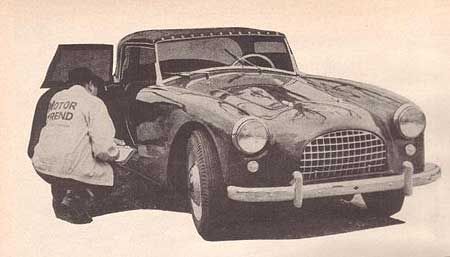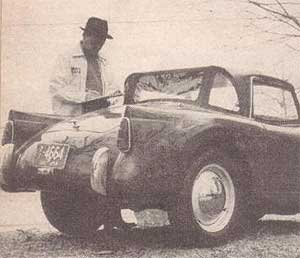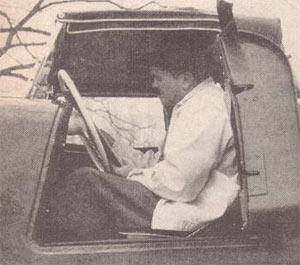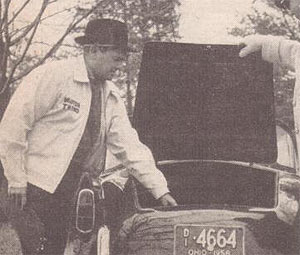| Turner Sports Cars | Articles |
| Turner Sports Cars | Articles |
 |
Probably the most flattering end of the Turner is the simple front, revealing the crisp competition-inspired lines around the grille and the low silhouette. |
| EASY TO DRIVE - easy to look at - easy to keep" is a two-thirds correct slogan devised by promoters of the Turner sportscar. The middle description - "easy to look at" - is a little unrealistic. This, plus the fact that when the top is erected the middle bow rests disconcertingly on one's scalp, is about the only thing not "easy" about the Stage I Coventry Climax-powered Turner - except for those who think the $3170 (p.o.e. Cleveland) price tag too high for a single-overhead-cam-engined car. Distributed by Tri-City Sports Cars, Route 3, Masillon, Ohio, with a sub-distributor in New York and dealerships being negotiated on both coasts, the Turner is available in four varieties. Lowest-priced of these is the Standard, using an Austin A-35 engine with no modifications. With dual carburetors, suitable camshaft, higher compression, and 60-hp output, the SPR 60 lists at $2635. Next are the Stage I and the Stage III, at $3370. A 95-bhp Stage II model was attempted but eliminated upon development of the Stage III. With the Stage I car we logged a total of 156 country miles on the open roads abounding Akron, Canton and Masillon with several townships in between. The car definitely was "easy to drive" and it was a thrilling experience. Assured by Distributor Dale E. Smith not to fear over-revving, we took the car to 7500 (tach goes to 8000), not once but several times in first and second gears. Speedo indication in first - with a calibrated instrument - was 45 mph. In second the speedo needle caromed to an indicated 80 mph - in second gear ! In third gear we leveled off at 6500 rpm and indicated a hair past 90 mph. By this time we had run out of country road, but we stopped testing with the opinion that the car will turn and honest 115 - 20 mph. Brakes as installed are satisfactory for everyday driving; however, Girling disc brakes are optional. I would say they are mandatory for competition work. Fade on road linings was quite noticeable after six 60-mph stops. Steering is rack and pinion, 2¼ turns lock-to-lock. Independent front suspension is by coil springs and Austin A-35 main components, with Armstrong shock absorbers. Rear suspension is by A-35 live axle on trailing arms sprung by a laminated torsion bar, dampened by telescopic shocks and located by a Panhard rod. Wheels are 15-inch steel disc (wire optional). The fiberglass body mounts on an 83-inch-wheelbase tubular frame. Engine compartment access and luggage space are average for a small car. Dry weight is 1175 pounds; overall length is 138 inches, overall width 54 inches. The interior fearures leather-covered bucket seats and leather door paneling. Top of dash extends inward about four inches with rolled foam padding. Steering wheel sits a trifle high, considering the limited headroom, but shift lever is well placed. Pedal location could be improved by a bit more separation. Instrument cluster is well placed and readable. Best of all is the performance of the Stage I engine. The car's discomforts seem to disappear upon the realization that here is a driving machine with more fortitude than its designers had imagination. - Steve DaCosta |
 |
It's doubtful how much good the fins will do aerodynamically, but they are distinctive. Bumpers are fragile, but 'glass body is strong. |
 |
Since Turner is a race car, weather equipment is more legal than actual. With roof erected, there isn't space enough for long hair. |
 |
A race car isn't going to carry much luggage, and the Turner's trunk is appropriately commodious. One spare and a little air is it. |